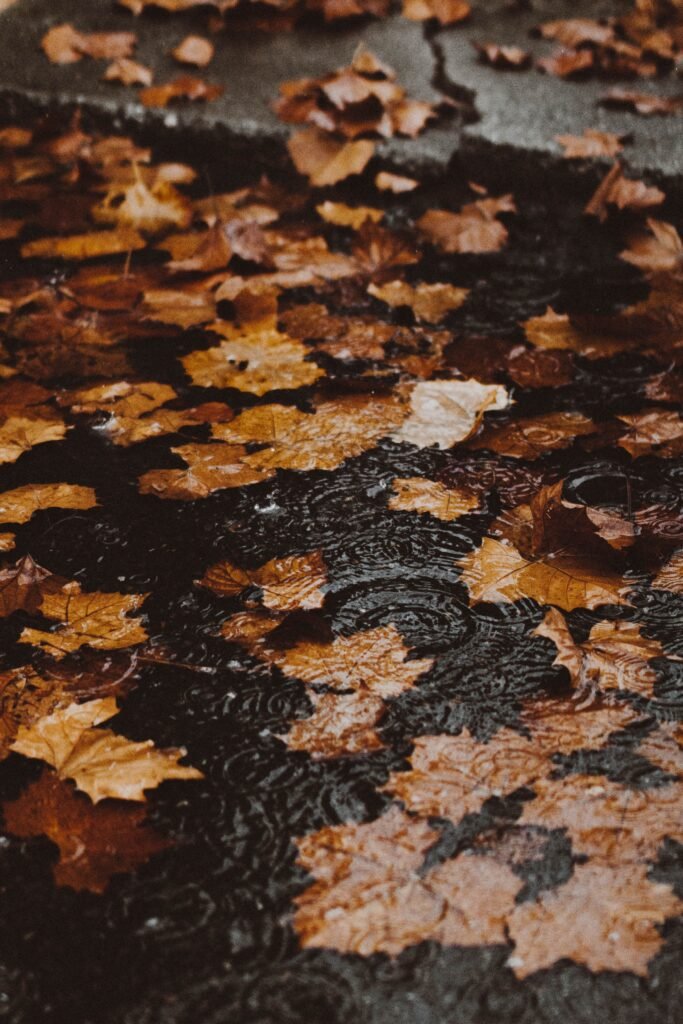As autumn approaches, it is crucial to consider the importance of fall landscaping. With nature’s vibrant hues and the cooling weather, optimizing your outdoor space during this season not only enhances its visual appeal but also ensures its long-term health and vitality. From planting seasonal flowers and shrubs to maintaining the lawn and cleaning up debris, this article provides valuable insights on the key practices and techniques required to create a stunning fall landscape that will leave a lasting impression. Prepare to discover the secrets behind transforming your outdoor oasis into a breathtaking masterpiece.
Choosing Fall Plants
When it comes to choosing plants for your fall landscape, it’s important to consider your climate and hardiness zone. Different plants thrive in different climates, so it’s essential to choose plants that are well-suited to your specific region. Consult a hardiness zone map to determine which plants are likely to thrive in your area.
In addition to climate considerations, selecting plants with fall foliage can add vibrant and eye-catching colors to your landscape. Many trees and shrubs display stunning hues of red, orange, and yellow during the autumn months. Take into account the size and shape of these plants, as well as their growth habits, to ensure they will fit well in your landscape design.
Another factor to consider when choosing fall plants is their blooming period. Some plants have extended blooming periods, which means they will continue to produce blossoms well into the fall season. These plants can provide continuous bursts of color and beauty to your landscape, even as summer comes to an end. Look for flowers or perennials that are known for their extended blooming periods and incorporate them into your fall garden design.
If you live in an area where deer are common, it’s important to consider plants that are deer-resistant. Deer can cause significant damage to plants, especially during the fall when their food sources become scarcer. Look for plants that deer are less likely to eat, such as varieties with strong scents or those with fuzzy or prickly foliage. By choosing deer-resistant plants, you can help protect your landscape from potential damage.
Preparing the Soil
Before planting your fall garden, it’s essential to prepare the soil properly. Testing the soil pH and nutrient levels will give you valuable information about the soil’s composition and help you determine which amendments may be necessary.
You can typically find soil testing kits at your local garden center or opt to send a soil sample to a laboratory for a more comprehensive analysis. The results will indicate the soil’s pH level, as well as the presence of nutrients such as nitrogen, phosphorus, and potassium. Based on these findings, you can adjust the soil’s pH and add nutrients as needed.
One common way to amend the soil is by adding organic matter. This can include compost, well-rotted manure, or other organic materials. Organic matter helps improve the soil’s structure, drainage, and nutrient-holding capacity. By incorporating organic matter into your soil, you can create a healthier environment for your plants to thrive.
Improving drainage is crucial for the overall health of your plants. Poorly drained soil can lead to root rot and other issues. To improve drainage, consider incorporating sand or perlite into the soil, especially if it is heavy clay. This will help water move away from the roots more efficiently, preventing waterlogged conditions.

Pruning and Trimming
Pruning and trimming are essential tasks to maintain the health and shape of your plants. By pruning summer-blooming shrubs in the fall, you can promote bushier growth and increased blooming the following year. Prune back any dead or diseased branches to prevent the spread of disease and to maintain the overall health of the plant.
Shaping hedges and topiaries is another important aspect of fall pruning. Use sharp, clean shears to shape the plants and create clean lines. This will help maintain the desired shape and form of your hedges and topiaries.
Cutting back perennials is necessary to prevent them from becoming overgrown and to encourage new growth in the following season. Once the foliage of the perennial plant starts to die back, trim it down to a few inches above the ground. This will help protect the plant during the winter months and promote healthy regrowth in the spring.
Mulching and Composting
Mulching is an essential practice in fall landscaping as it helps conserve moisture, insulate the soil, and suppress weed growth. Using organic mulch such as wood chips or shredded leaves can also improve the soil’s fertility and structure over time.
When applying mulch, make sure to spread it evenly around the base of the plants, leaving a small gap around the stems to prevent rot. Aim for a thickness of 2-4 inches for most plants, being careful not to pile mulch up against the trunk or stem, as this can create a conducive environment for pests and diseases.
Creating a compost pile is a sustainable practice that not only allows you to recycle organic waste but also produces nutrient-rich compost that can be added to your soil, improving its health and fertility. Start by collecting kitchen scraps, grass clippings, and other organic materials in a compost bin or pile. Turn the pile regularly to promote decomposition, and in a few months, you’ll have nutrient-rich compost to enrich your soil.
Adding compost to your garden beds can help improve soil structure, enhance water retention, and provide essential nutrients to your plants. Before applying compost, loosen the top layer of soil with a garden fork or tiller. Spread a layer of compost over the soil surface, and then mix it in to a depth of 4-6 inches.

Planting Bulbs and Annuals
With the arrival of fall, it’s time to start thinking about planting bulbs and annuals to add color and visual interest to your landscape. Choosing fall-blooming bulbs such as tulips, daffodils, and crocuses can provide vibrant bursts of color during the early spring months. When selecting bulbs, look for healthy ones that are free from blemishes and feel firm to the touch.
Preparing the soil for bulbs is essential to ensure their successful growth and blooming. Loosen the soil to a depth of 6-8 inches using a garden fork or tiller. Remove any rocks or debris and level the soil. Depending on the specific requirements of the bulbs you are planting, you may need to amend the soil with organic matter or a bulb fertilizer.
Annual flowers are a great way to add instant color and beauty to your fall landscape. Choose annuals that thrive in cooler temperatures, such as pansies, marigolds, and snapdragons. Prepare the soil by removing weeds and loosening it to a depth of 4-6 inches. Add compost or organic matter to improve soil fertility and drainage.
Provide adequate watering and fertilization for your bulbs and annuals. Water deeply after planting and continue to water regularly until the plants become established. Apply a balanced fertilizer according to the package instructions to promote healthy growth and blooming throughout the fall season.
Caring for Lawns
Maintaining a healthy lawn during the fall season is crucial to ensure it retains its vigor and beauty. Repairing bare spots is an important step to prevent weeds from taking over and to promote a lush lawn. Rake away any dead grass, loosen the soil, sprinkle grass seed over the area, and lightly rake to cover the seeds. Water the area regularly until the new grass becomes established.
Applying fertilizer and weed control is essential for a healthy and weed-free lawn. Choose a fertilizer that is specifically formulated for fall application, as it will provide the necessary nutrients to strengthen the grass roots and promote healthy growth. Follow the package instructions for application rates and timing.
Mowing at the correct height is key for maintaining a healthy lawn. As fall progresses, gradually lower the mower blades to leave the grass at a shorter height. This will help prevent matting and diseases caused by long blades of grass. However, avoid cutting the grass too short, as it can hinder root growth and make the lawn more susceptible to weeds.
Regularly raking leaves is essential to prevent them from smothering the lawn. Leaves can block sunlight and prevent air circulation, leading to diseases and dead spots in the grass. Use a rake or leaf blower to remove leaves from the lawn, or consider composting them to create nutrient-rich leaf mold for your garden.

Creating Fall-themed Displays
Fall is the perfect time to create beautiful and inviting displays using seasonal elements. Utilizing pumpkins and gourds can instantly bring a festive atmosphere to your landscape. Choose a variety of sizes, colors, and shapes, and place them strategically throughout your garden beds or on front porches. Pumpkins and gourds also make excellent centerpieces for outdoor tables or as accents for window boxes.
Incorporating cornstalks and hay bales adds height and texture to fall displays. Use them as backdrops or create decorative arrangements by bundling cornstalks together and tying them with twine. Hay bales can serve as seating areas or be stacked to create varying heights and levels for other fall decorations.
Adding fall-colored flowers and foliage enhances the seasonal charm of your landscape. Choose plants with warm and vibrant hues such as mums, pansies, and ornamental cabbage. Incorporate these plants into existing garden beds or create container arrangements for patios and entrances.
Arranging ornamental grasses and seed pods adds visual interest and movement to fall displays. Consider using grasses with feathery plumes, such as Miscanthus or Pennisetum, for added texture. Seed pods from plants like milkweed or poppies can provide unique and interesting shapes. Arrange these elements in vases, baskets, or woven containers to create stunning focal points.
Protecting Plants from Frost
As temperatures drop during the fall season, it’s essential to protect sensitive plants from frost. Covering plants at night can help prevent freezing and damage to delicate foliage. Use frost blankets, old sheets, or even burlap to cover vulnerable plants. Make sure to secure the covering tightly to the ground using rocks or stakes to prevent it from blowing away.
For added protection against frost, consider utilizing row covers. These lightweight fabrics allow air, light, and water to pass through while providing an extra layer of insulation for plants. Row covers can be draped directly over plants or supported by hoops or frames, creating a mini-greenhouse effect.
Creating a microclimate can help keep plants warmer during cold nights. Position plants close to south-facing walls or fences, where they can benefit from the heat that radiates from the surfaces. Additionally, placing mulch around the base of plants can help insulate the soil and roots from the cold.
For potted plants, it’s a good idea to bring them indoors as the temperature drops. Find a suitable location with enough natural light, and make sure to water them adequately. Avoid placing potted plants near sources of heat, as this can cause them to dry out too quickly.
Maintaining Garden Equipment
Proper maintenance of your garden equipment is essential to ensure its longevity and optimal performance. Cleaning and sharpening tools should be done regularly to keep them in good condition. Remove any dirt, grass, or rust from gardening tools using a wire brush or steel wool. After cleaning, sharpen the cutting edges of tools such as pruning shears, loppers, and hedge trimmers using a sharpening tool or file.
Organizing and storing equipment properly will help keep your garden area neat and tidy. Invest in a storage shed, tool rack, or wall-mounted hooks to keep your tools organized and easily accessible. Make sure to clean and dry tools before storing them to prevent rust and damage.
Checking and repairing irrigation systems should be done before winter arrives to avoid any potential issues. Inspect hoses, sprinklers, and other components for leaks or damage. Replace any worn or broken parts, and make sure all connections are secure. Drain and store hoses properly to prevent them from cracking or freezing during winter.
Preparing power equipment for winter is crucial to ensure it remains in good working condition. Drain the fuel or add a fuel stabilizer to prevent it from deteriorating. Clean and lubricate moving parts, such as mower blades or chainsaw chains. Store power equipment in a dry and protected area to prevent rust and damage.
Implementing Sustainable Practices
When it comes to fall landscaping, it’s important to consider implementing sustainable practices that are beneficial for both your garden and the environment. Choosing native and drought-resistant plants is a great way to reduce water consumption and create a landscape that is well-adapted to your local conditions. Native plants require less watering and are more resistant to native pests and diseases.
Collecting and reusing rainwater is another sustainable practice that can help conserve water and reduce your reliance on municipal water supplies. Install rain barrels or cisterns to capture rainwater from gutters and downspouts. This collected water can be used to irrigate your garden during dry periods.
Practicing integrated pest management is a sustainable way to control pests without relying on harmful chemicals. Monitor your garden regularly for pests and use a combination of biological controls, cultural practices, and targeted treatments to manage pest populations. Encouraging beneficial insects and birds, maintaining good plant health, and practicing proper sanitation are key components of integrated pest management.
Using efficient irrigation methods is crucial to minimize water waste and promote healthy plant growth. Drip irrigation systems deliver water directly to the root zone of plants, reducing evaporation and runoff. Use timers or smart controllers to ensure irrigation is done at optimal times, such as early morning or late afternoon. Avoid watering during windy conditions to further maximize water efficiency.
By following these comprehensive steps and considerations for fall landscaping, you can create a beautiful and sustainable outdoor space that thrives throughout the autumn season. Whether you’re planting bulbs, preparing the soil, pruning and trimming, or creating fall-themed displays, each aspect plays a vital role in maintaining the health and beauty of your landscape. With the right techniques and sustainable practices, you can enjoy a vibrant and flourishing garden well into the fall season.

